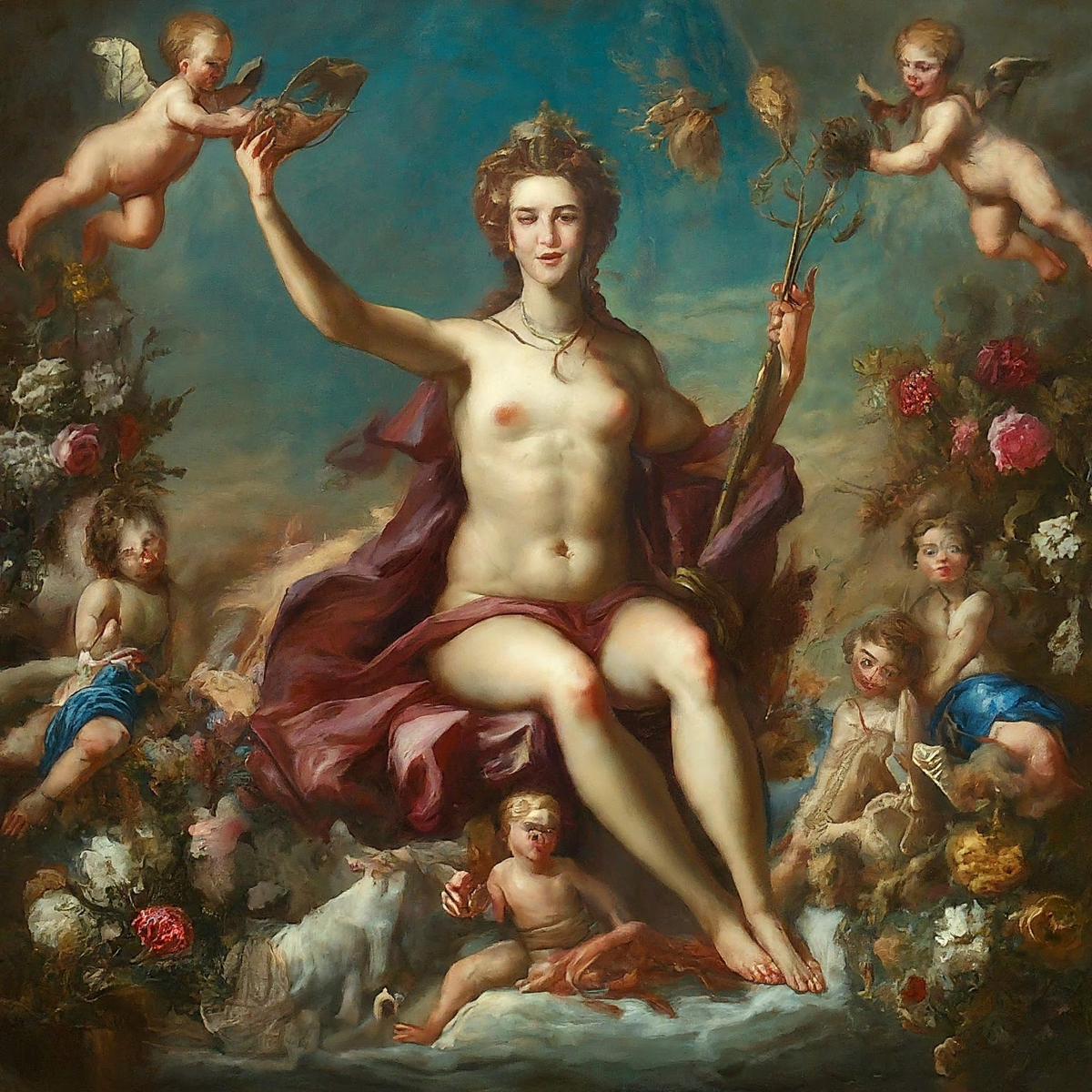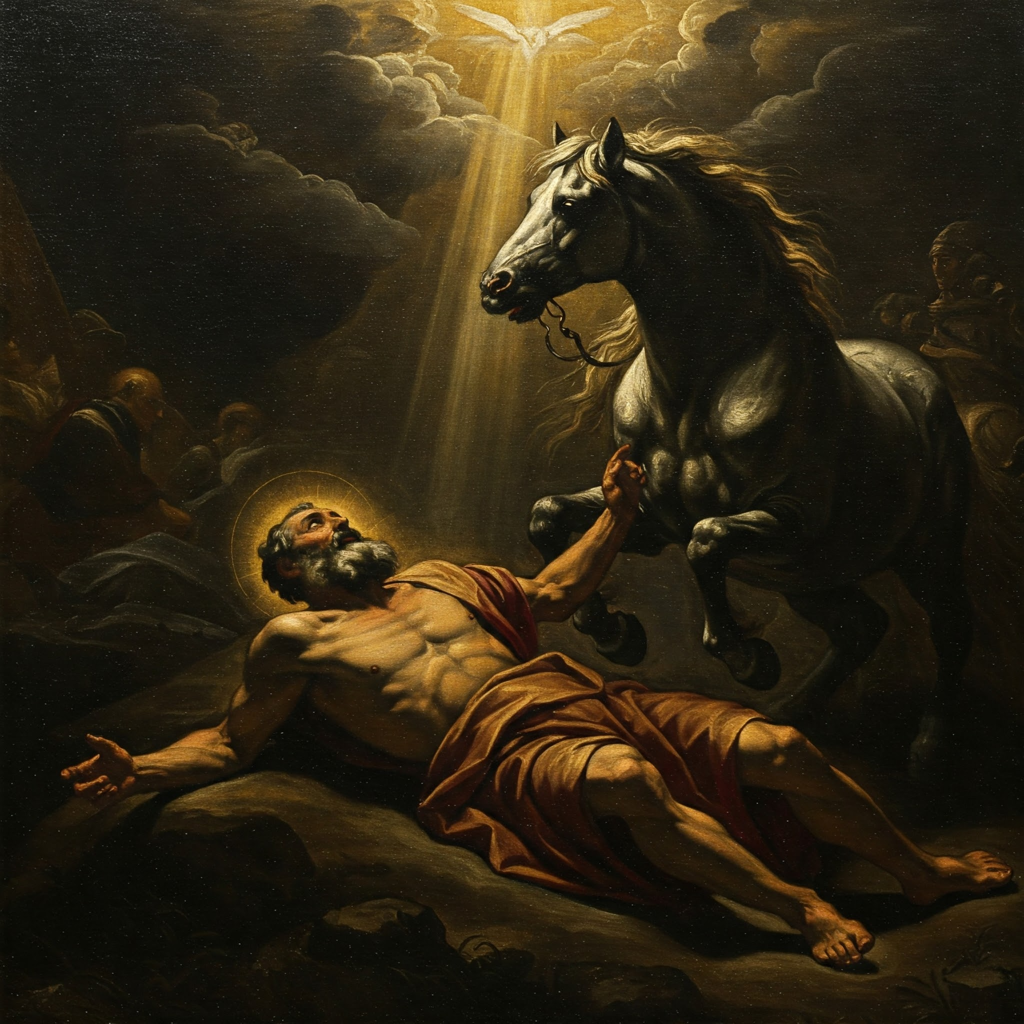Baroque Art: Dramatic Light, Vivid Color & Intense Emotion Mastery
Baroque painting is a dramatic, highly detailed, and emotionally charged style that emerged in Europe during the 17th century, characterized by its use of intense contrasts of light and shadow, dynamic compositions, and a strong sense of movement. This style was often employed to evoke emotion, awe, and religious devotion, reflecting the grandeur and complexity of the period, particularly in response to the Counter-Reformation in Catholic Europe.
Key Characteristics of Baroque Painting
- Dramatic Use of Light and Shadow (Chiaroscuro):
- Baroque painters mastered chiaroscuro, the contrast between light and dark, to create depth, drama, and three-dimensionality in their works. The sharp interplay of light and shadow heightened emotional tension and focused attention on key elements of the composition.
- Example: Caravaggio’s The Calling of Saint Matthew, where a beam of light dramatically illuminates the figures in the scene.
- Dynamic Composition and Movement:
- Unlike the static compositions of earlier Renaissance art, Baroque paintings often feature diagonal lines, swirling forms, and a sense of action or movement. Figures seem to be caught in motion, creating a feeling of energy and fluidity.
- Example: Peter Paul Rubens' The Elevation of the Cross, which depicts muscular figures straining to lift the cross, creating a powerful sense of movement and physical effort.
- Emotional Intensity:
- Baroque art aimed to evoke strong emotions, whether through religious ecstasy, human suffering, or triumphant power. The subjects were often portrayed with heightened realism and intense facial expressions that conveyed deep emotion and narrative drama.
- Example: Gian Lorenzo Bernini’s Ecstasy of Saint Teresa, though a sculpture, embodies the emotional intensity typical of Baroque visual art, capturing a moment of divine revelation.
- Ornate Detail and Grandeur:
- Baroque paintings are often richly detailed, with elaborate ornamentation and a focus on textures, such as the play of light on fabric, gold, and skin. This attention to detail contributed to the grandeur and opulence of the Baroque style.
- Example: Diego Velázquez’ Las Meninas, which showcases intricate details in the clothing, reflections, and interior setting, while also engaging the viewer through complex composition.
- Religious Themes and Symbolism:
- In Catholic regions, Baroque art often served the Counter-Reformation, using religious subjects to inspire faith and devotion. Biblical stories, saints, and martyrdoms were depicted with intense emotion and divine light, emphasizing the glory and power of the Church.
- Example: Caravaggio’s The Conversion of Saint Paul, where the dramatic use of light symbolizes spiritual awakening and divine intervention.
- Theatricality:
- Baroque paintings often resemble theatrical scenes, with figures arranged as though on a stage, enhancing the sense of drama. The use of foreshortening (depicting objects or figures at an angle to create depth) contributed to this theatrical effect, making the viewer feel as though they were part of the scene.
- Example: Rembrandt’s The Night Watch, which presents a group of militia members in a highly staged and dynamic composition.
Common Themes in Baroque Painting
- Religious Narratives: Scenes from the Bible, the lives of saints, and Christian martyrdoms were common, particularly in works intended for churches and religious patrons.
- Mythological and Historical Subjects: In addition to religious themes, Baroque painters often depicted scenes from classical mythology, history, and allegory, blending the divine and human realms.
- Portraiture: Baroque portraiture often emphasized power and status, with figures posed in grand, imposing settings that reflected their wealth or authority.
Famous Baroque Painters and Works
- Caravaggio:
- Known for his dramatic use of chiaroscuro and naturalism, Caravaggio’s works like The Calling of Saint Matthew and Judith Beheading Holofernes are iconic examples of Baroque intensity and realism.
- Peter Paul Rubens:
- Rubens’ paintings are known for their dynamic compositions, vivid color, and sensual figures. His works, such as The Elevation of the Cross and The Triumph of the Eucharist, epitomize the grandeur of Baroque art.
- Rembrandt van Rijn:
- Rembrandt’s mastery of light and shadow, along with his profound exploration of human emotion, is evident in works like The Night Watch and The Return of the Prodigal Son.
- Diego Velázquez:
- Velázquez, a Spanish Baroque master, is known for his realistic portraits and complex compositions, as seen in Las Meninas, which plays with perspective and the relationship between the viewer and the subject.
- Artemisia Gentileschi:
- One of the few renowned female painters of the Baroque era, Gentileschi’s works, such as Judith Slaying Holofernes, are known for their powerful emotional expression and dramatic compositions.
Baroque painting is marked by its dramatic use of light and shadow, emotional intensity, and dynamic compositions. It aimed to captivate the viewer, often through religious, historical, or mythological subjects presented in a highly theatrical and detailed manner. The Baroque style reflects the grandeur and complexity of the 17th century, balancing opulence with a powerful emotional impact.
Baroque Paintings in Mythological and Historical Subjects themed style
The Baroque style, emerging in the late 16th century, is known for its dramatic use of light, rich c...
Baroque Paintings with Religious Narratives Theme
Baroque religious paintings are grand, theatrical, and emotionally charged, designed to draw viewers...


